(36446 products available)


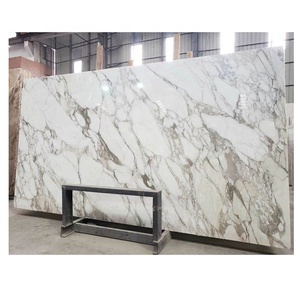




















































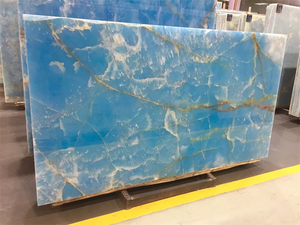














































































































































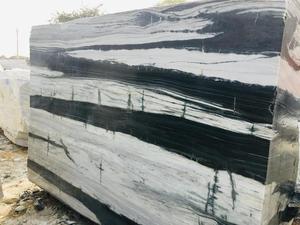

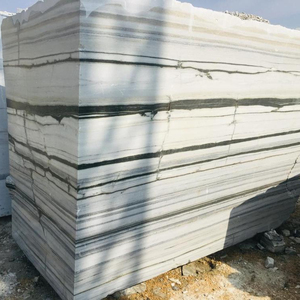
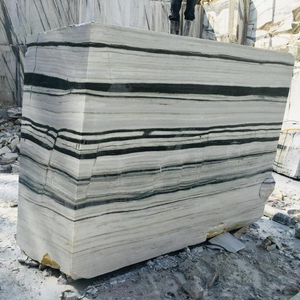
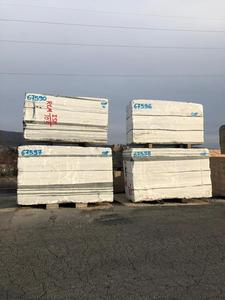
A marble block is a solid piece of marble that is rectangular or square. The size and weight of the block depend on the type of marble it is. When considering a block of marble, it is essential to consider the origin, color, type, and size. This will help determine the price and how the block can be used.
There are many different types of marble blocks available. The most popular ones are listed below:
Carrara marble
This type of marble comes from Carrara in Italy. It is one of the most popular types of marble because it is used in many famous sculptures and buildings. The marble blocks are white or gray and have a very subtle veining. Carrara marble is used for countertops, floors, and walls.
Calacatta marble
This type of marble also comes from Italy. It is more expensive than Carrara marble because it is rarer. The blocks are white with thick, dramatic veins of gold or gray. Calacatta marble is used in luxury spaces like hotels and homes.
Oman Beige Marble
This marble is known for its warm beige tones and subtle veining. It is often used to create a sophisticated and elegant atmosphere. Oman beige marble blocks are used for flooring, wall cladding, and countertops. Oman beige marble is extracted from Oman quarries.
Crema Marfil Marble
This marble is light beige with irregular patterns of light and dark beige. It is suitable for many applications, such as flooring, wall cladding, and countertops. Crema Marfil marble blocks are extracted from quarries in Spain.
Emperador Dark Marble
This marble has a dark brown background with irregular light brown veining. It is often used for flooring, wall cladding, and countertops. Emperador dark marble blocks are extracted from quarries in Spain.
Nero Marquina Marble
This marble is black with white veins. It is used for many applications, such as flooring, wall cladding, countertops, and decorative elements. Nero Marquina marble blocks are extracted from quarries in Spain.
Thassos marble
This marble comes from Greece. It is pure white and very reflective. Thassos marble is used in places where a bright, clean look is desired.
Crema marfil marble
This marble comes from Spain. It is creamy white with subtle veining. Crema Marfil marble is used in many luxury homes and offices.
Marble blocks are widely appreciated for their elegance and timelessness. They are used in various applications, from construction to artwork. Below are some functions of a marble block.
Construction
Marble is a popular material in the construction industry. It is valued for its durability and aesthetic appeal. Marble is used in the construction of floors, staircases, walls, and countertops. It is also used in the construction of monuments, memorials, and sculptures. White marble blocks are commonly used in construction because they have an appealing look.
Artwork
Marble has been used in artwork for centuries. It is prized for its ability to be polished to a high sheen and its capacity to capture and play with light. Marble blocks are used to create sculptures, statues, and decorative objects. They are also used in creating intricate carvings and engravings.
Marble Tiles
Marble tiles are a product of cutting and polishing smaller pieces from marble blocks. They exhibit the same properties as marble blocks but are lighter and easier to handle. Marble tiles are used to cover floors and walls in residential and commercial spaces. They are also used in creating backsplashes and tabletops. One main feature of marble tiles is that they are available in different colors, sizes, and finishes. This makes them ideal for both traditional and contemporary design schemes.
Statues and sculptures
Statues and sculptures are made by skilled artisans who chisel and carve out of marble blocks. This process allows for the creation of detailed and intricate designs. An artisan can make statues and sculptures from different types of marble, ranging from the classic white marble to the more colorful and ornate options.
The demand for marble blocks has increased dramatically in recent years. According to the analysis report by Statista, the global marble market was valued at $7.25 billion in 2021 and is projected to grow by $ 11.80 billion by 2031. Marble is a popular choice among architects and designers due to its versatility, durability, and timeless appeal. Below are some common usage scenarios of marble blocks that are perfect for business buyers.
Large Scale Building Projects
Purchasing a marble block is a cost-effective solution for large-scale building projects. It offers economies of scale, and the end result has high aesthetic value. Examples of large-scale projects that use marble blocks include:
- Museums and cultural institutions
- Government buildings and monuments
- Luxury hotels and resorts
Architectural Elements
Marble blocks are cut into smaller pieces and used as architectural elements in different structures. These applications require high-quality marble slabs that are visually appealing and consistent in color and texture. Some common uses of marble in architecture include:
- Facades and cladding systems
- Columns and pillars
- Stairs and staircases
- Flooring and paving
- Balconies and railings
High-End Interior Design
Marble blocks are popular among interior designers due to their luxurious and timeless appeal. Using marble blocks creates an elegant and sophisticated atmosphere in interior spaces. Some common applications of marble in interior design include:
- Marble countertops in kitchens and bathrooms
- Marble flooring and wall coverings
- Marble fireplaces and mantels
- Marble furniture and decor items
Outdoor Spaces
Thanks to its durability and resistance to harsh weather conditions, marble is ideal for outdoor spaces. It also has a unique sparkle when exposed to direct sunlight, making any outdoor space luxurious. Outdoor uses of marble blocks include:
- Patios and terraces
- Walkways and driveways
- Pool surrounds and fountains
- Outdoor kitchens and fireplaces
Custom Marble Artifacts
Marble blocks are transformed into custom marble artifacts by skilled artisans. This entails detailed cutting, polishing, and engraving of the marble block to produce unique artifacts that serve as mementos or gifts. The marble blocks used in this application are usually smaller but have unique colors and textures.
When purchasing marble blocks for sale, buyers should consider several factors to ensure they get the right product for their targeted market needs. Here are some of them:
Color and Veining
Different colors and veining patterns exist within the white marble blocks and even the black ones. Each block has unique characteristics, and buyers should stock up the types that will complement the design of their customers' ongoing projects. For instance, customers looking for a classic and elegant look will want to work with a marble that has an average veining pattern. On the other hand, those looking for a dramatic appearance will prefer a marble block with bold and prominent veins.
Quality and Purity
The quality and purity of the marble affects its appearance and the way it takes the finish. Business owners should get high-quality blocks containing a minimum amount of impurities. This can be determined by checking the opacity and color of the block.
Thickness and Size
The thickness and size of the marble block affect the end product. Buyers should get blocks of different sizes and thicknesses to cater to the different needs of their customers. For instance, thicker blocks are ideal for countertops, while thinner ones are suitable for cladding and flooring.
Country of Origin
The country where the marble block is quarried plays an important role in its quality. Some countries have established quarries that produce high-quality blocks of marble. Business owners should pay attention to the country of origin and choose the ones that have high-quality marble.
Workability
Marble is cut and shaped using different techniques depending on the end use. Buyers should get blocks of marble that can be easily worked on to produce high-quality end products. Factors like the level of hardness and the size of the marble block influence its workability.
Availability and Supply
The availability and supply of the marble block affects the price and also the lead time. Buyers should consider the supply chain and stock up a product they can easily access and which will have a minimal lead time.
Q: Is it advisable to invest in a block of marble?
A: Yes, the demand for marble is consistently high, driven by its timeless beauty and versatility in architectural and design applications. As a result, buying a marble block can be a worthwhile investment.
Q: What are the disadvantages of marble?
A: While marble has many advantages, it's essential to be aware of its drawbacks. Marble is prone to scratching and staining, particularly from acidic substances. It also requires regular sealing to maintain its appearance and prevent stains. Additionally, marble is relatively soft compared to other stones, which makes it susceptible to scratches and dents. Furthermore, it is more expensive than granite and other countertop materials due to its aesthetic appeal and luxury status.
Q: How should marble be cleaned?
A: Cleaning marble is straightforward, but it requires specific products to protect the stone. Use a pH-neutral marble cleaner or soap and water. Avoid harsh chemicals or acidic cleaners that can damage the surface. For daily cleaning, a microfiber cloth and mild soap will suffice. For tough stains, use a poultice with baking soda and water. Wipe up spills immediately, especially acidic ones like lemon juice or vinegar. Avoid abrasive materials that can scratch the surface.
Q: What are the three types of marble?
A: There are three main types of marble: Calacatta, Carrara, and Emperador. Calacatta marble is characterized by its white background and bold, dramatic gray or gold veining. It is considered one of the most luxurious types of marble. Carrara marble, the most popular type, is known for its blue-gray veining and white to gray background. It is commonly used for sculptures and buildings. Emperador marble has a brown color with varying patterns of veins and is considered one of the most elegant types of marble.